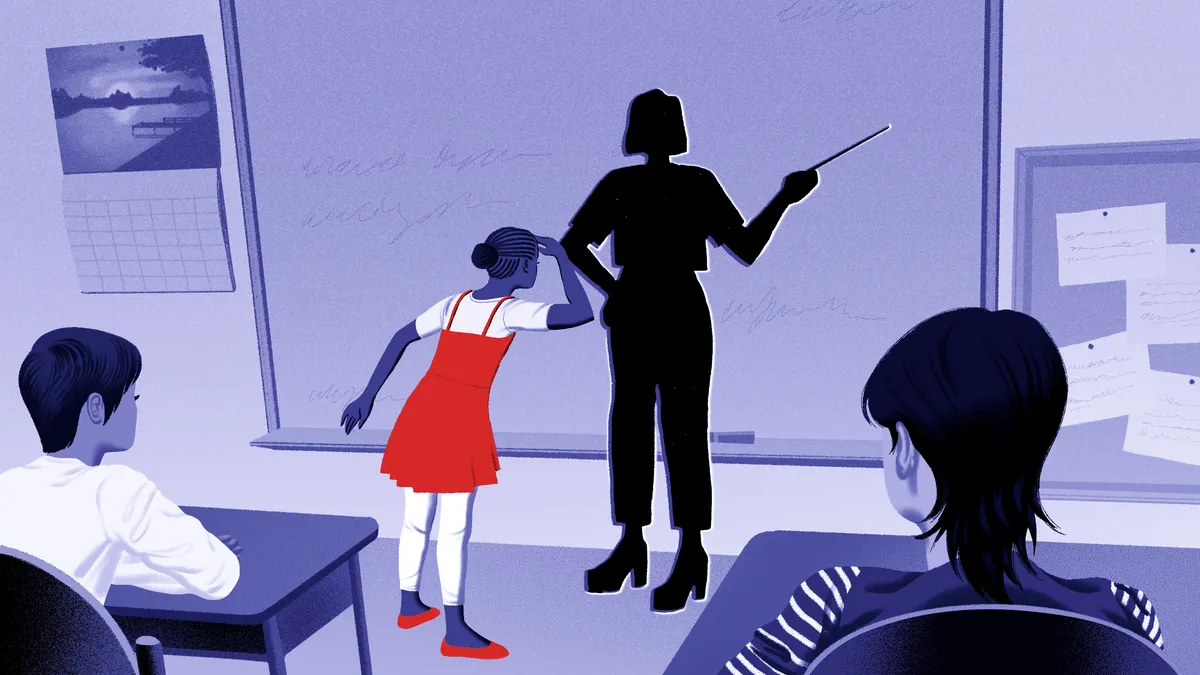Staffed Up is a regular series examining school staffing best practices and solutions for teacher recruitment and retention. Catch up on other installments here.
Ongoing student enrollment declines and the end of historic federal pandemic aid are causing school leaders to take a hard look at their staffing policies as district budgets tighten.
Using pandemic-era Elementary and Secondary School Emergency Relief dollars, schools nationwide hired more teachers despite overall student enrollment dropping, said Marguerite Roza, a research professor and director of Georgetown University’s Edunomics Lab.
Now, however, districts are considering more school closures and consolidations as a result of enrollment declines and a surge of school choice options that parents are using to send their kids to private or religious schools. And as the national birthrate drops, these enrollment trends could struggle to rebound.
Are teacher shortages in the rearview mirror?
Because some districts chose to hire despite declining enrollment, they are laying off staff or implementing hiring freezes and leaving open positions, Roza said.
Consequently, the conditions used to generally describe the teacher shortage have “reversed,” Roza said. “It doesn’t mean that every spot has been filled. It’s still hard to recruit and fill positions in rural districts. High-poverty schools have always had a hard time. Math positions and special ed have always been more scarce.”
The term “teacher shortage” is often used in a simplistic and rhetorical way that obscures the nuanced staffing challenges districts face, especially for certain STEM subjects and special education, said Thomas Dee, a professor at Stanford University’s Graduate School of Education.
In an analysis of student-teacher ratios nationwide between 2010 and 2022, Dee said that 2022 saw the lowest number of students per one teacher. The ratio fell from 16.4 to 15.4 in that 12-year period, he found.
“There are many more teachers per students than ever before in U.S. history,” Dee said.
A separate K-12 Dive analysis of student-teacher ratios in November 2024 also showed that 43 out of 50 states and Washington, D.C., had on average fewer students per teacher post-COVID-19 than before the pandemic.
Navigating staffing amid enrollment challenges
Arizona’s Deer Valley Unified School District is one district out of many nationwide facing enrollment-related budget hurdles as a result of declining birthrates and growing alternative schooling options for parents, said Curtis Finch, the district’s superintendent. Arizona was the first state to approve a universal school voucher program in 2022.
Deer Valley USD’s enrollment shrank by 1.5% between the 2021-22 and 2023-24 school years, dropping from 33,303 students to 32,803, according to state data.
“We’re at the tip of the educational experiment,” Finch said regarding the impact of Arizona’s school choice policy on public schools.
Last school year, Finch said, the district had to cut about 50 positions — most of which weren’t backfilled because of local and state funding budget constraints.
Still, he said, Deer Valley USD struggles to fill science, math and special education teaching roles.
What has helped with staffing issues, however, is the district’s two-year teacher prep program that trains anyone in the community with a bachelor’s degree to become a certified teacher through classes, training and working with a mentor. The grow-your-own program doesn’t require its graduates to teach in the district, but 95% of those who have completed the program do end up teaching at Deer Valley USD, Finch said.
About 160 teachers have gone through the program and filled in the district’s instructional gaps within the past three years, Finch said.
Other strategies that education finance researchers suggest for districts to consider in their hiring practices amid budget and enrollment challenges include scrutinizing their grow-your-own programs for a good return on investment, paying effective teachers more, firing ineffective uncertified teachers, and streamlining teacher certifications across state lines.
If there were broad, generic teacher shortages, then the big solution for schools would be to make the profession more attractive to draw in more teachers. “But that’s not the issue,” Dee said.
“The issue is hard-to-staff schools and hard-to-staff subjects,” which begs the ultimate question for Dee: “What can we do to get more high-quality teachers into the schools serving our most vulnerable students?”









